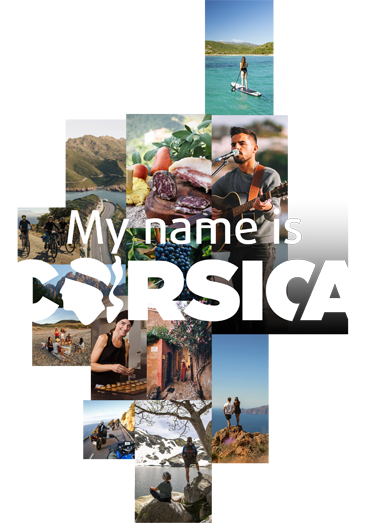
Rechercher...
Explore Corsica

By Johanna the 23/09/2022
Meeting with Charles Fessler, chestnut farmer and beekeeper in Muratu
A passionate farmer with many talents.

Born in Muratu, he continues of the tradition of the passing of knowledge of generations from his parents, grandparents and great-grandparents who worked here. We spent a day with Charles in the heart of the chestnut grove, enjoying grafting lessons, discovering the different varieties of chestnuts, visiting the beehives as well as ancestral sites dedicated to the manufacture of chestnut flour... It is an extraordinary moment of sharing that will soon be available to all visitors curious to discover the ancestral trades that make Corsica what it is today. We asked him a few questions to get to know him a little better.
 ©ATC
©ATC
 ©ATC
©ATC

Can you tell us in a few words what led you to rehabilitate your chestnut grove? How much does it produce now?
This chestnut grove had been abandoned for decades. Having finished my studies, I had the time to devote to it. We were in the post-cynips period (wasps that do damage to chestnut trees), and the trees were back in production. Having always been in love with the trees and this place, the restoration of the chestnut grove was imperative to me: composed of a dozen trees when I started, the chestnut grove has more than a hundred trees today. The prime reason wasn’t for professional purposes when I started this journey but to safeguard the heritage of our elders. The first year, production was just 192 kg of chestnut flour, but by last year production was more than a ton. Next year I will have the whole chestnut grove pruned to restart its production.
What is the secret of making a good chestnut flour?
First, it is a question of the quality of the fruit, some varieties of chestnuts are better than others for flour. In Muratu we are fortunate to have a great diversity of varieties with a predominance of Tighjulane and Ghjentile which are chestnuts which have a pellicle (second bitter skin of the fruit) and they are very sweet. Then comes the drying, a very important step, because the drier the chestnuts are, the easier it will be for the miller to make a very fine flour. Then there are two crucial steps: the sorting first - during which time all the "damaged”' chestnuts are removed, then we remove the rest of the bitter skin. Poor sorting will lead to a bad taste in the flour as well as a flour pitted with impurities. The last step takes place in the oven, to "biscuit" the chestnuts, brown the flour and bring out the sweetness.. All these steps are carried out according to the rules of the art and traditional drying in a wood oven.
When it comes to honey, what are the different varieties you produce? Which one do you prefer and why?
For honey I often move my hives which allows me to have a varied range of plants and flowers available to the bees. In spring it will be clementine honey from an apiary located in Plaine Orientale as well as maquis honey from an apiary located near the village. In June, I move the hives under the chestnut trees and harvest chestnut honey in July - and it also means my trees are pollinated. I sometimes harvest some autumn scrub honey but I prefer to leave this honey as a winter reserve for bees. My favourite is chestnut honey, it has plenty of character and I like the slight bitterness, plus it’s the one that best represents my region.
How do you feel when the product is ready and you have to part with it for the merchant's stall?
A sense of pride, especially when it comes to chestnut flour which I make from start to finish, from the maintenance of the plots to the processing of the fruit. The satisfaction lies in obtaining a quality product while preserving the know-how of our elders. It is extremely rewarding because this product is part of our heritage.
You plan to open your farm to visitors - what message do you want to convey to those who are curious about your various activities?
I think it's important to be honest with the customer. To return to real farming, to share with them this ancestral know-how, to make them aware of fundamental issues related to the environment.
Gastronomy as a way to bring tourists and local producers together - what do you think?
Are we in a country where gastronomy holds a prominent place? In my opinion, our region has an important card to play in this arena. We have many products of high quality, whether it is charcuterie, cheese, honey or wine for example. Food tourism allows visitors to combine local produce with the history, know-how and culture of a region.
You have another project in progress: an olive grove! Can you tell us more?
Indeed, my father and I planted about 650 olive trees below the village almost two years ago. Here again, local varieties were favoured. The olive grove consists mainly of the Ghjermana variety, the rest is composed of Sabina, Capannacce and Oliese. Thanks to this plantation, we hope that within the next few years we can offer a quality olive oil that will reflect the unique properties of the island.


 ©CF
©CF
 ©CF
©CF
For more information :
06 88 41 71 80
charles.fessler@gmail.com
Some data...
The chestnut
There are 7 varieties of chestnuts in Corsica:
- Tighjulona
- Morianinca
- Ghjentile
- Saorida
- Russella
- Merunaccia
- Campanese
2010 - creation of the PDO "farina castagnina corsa – Corsican chestnut flour"
In 2020 - 150 tons of flour were produced *
*Source Chamber of Agriculture
Honey
There are 6 varieties of honey and honeydew in Corsica:
- Spring honey
- Spring Maquis honey
- Maquis honeydew honey
- Summer Maquis honey
- Chestnut honey
- Autumn Maquis honey
Present in Corsica since Antiquity
1998 - creation of the PDO "Honey of Corsica – Mele di Corsica"
There is a bee of Corsican ecotype Apis mellifera mellifera corsica, the APA CORSA
Olives
There are 7 varieties of olives recognised for the PDO "Oliu di Corsica"
- Sabina
- Zinzala
- Aliva nera
- Ghjermana
- Curtinese
- Capanacce
- Oliese
In Corsica about 135,000 olive trees are harvested
Olive oil is a staple element of the Mediterranean diet (or Cretan diet), whose benefits are recognised by health professionals
Find out more
H
oney
Chestnut Flour
O lives
ODARC
website
THE NEBBIU CONCA D’ORU : discover the region
Locate
On the same subject
CORSICAN GASTRONOMY
powered by cd-media.fr



